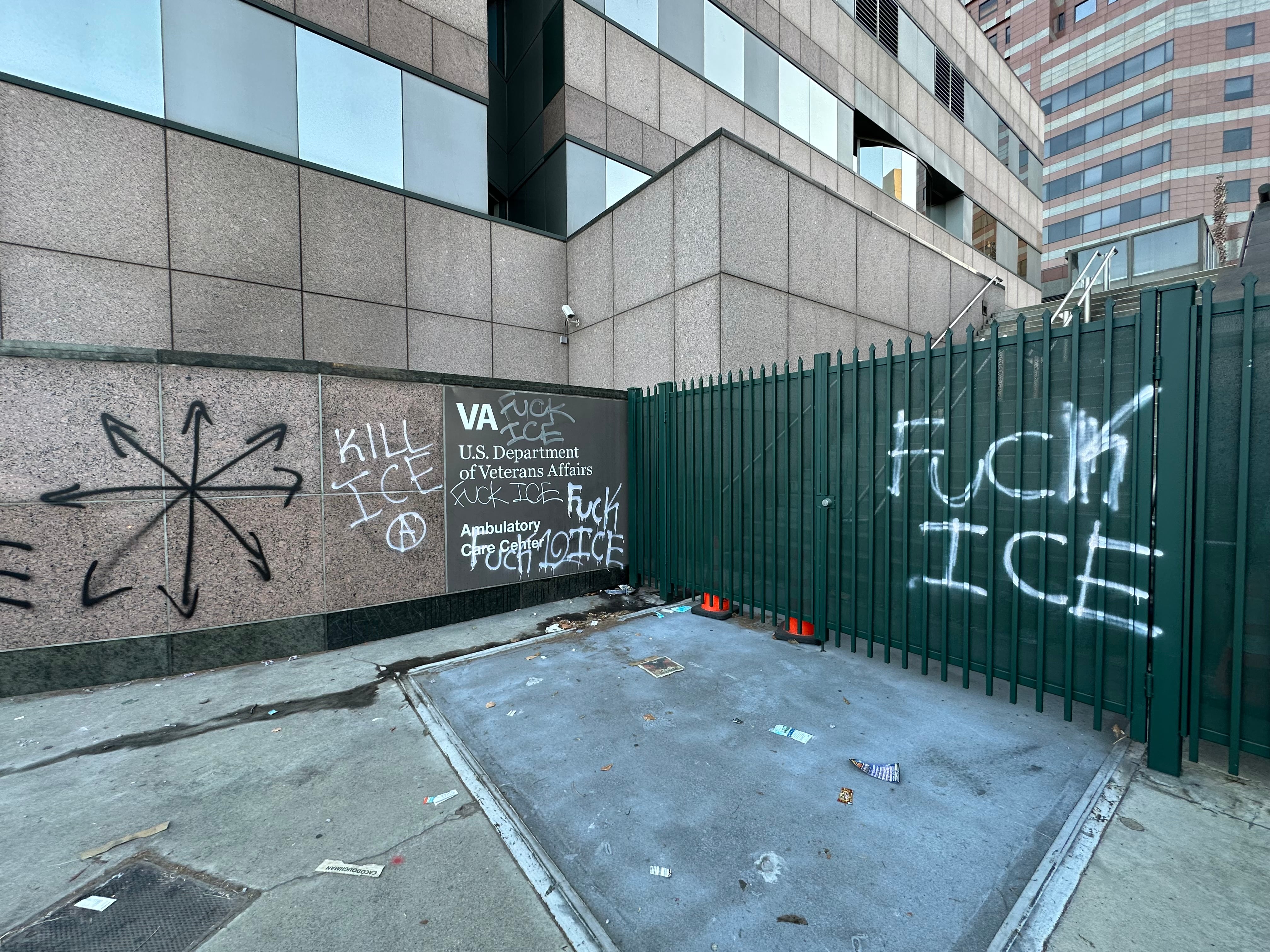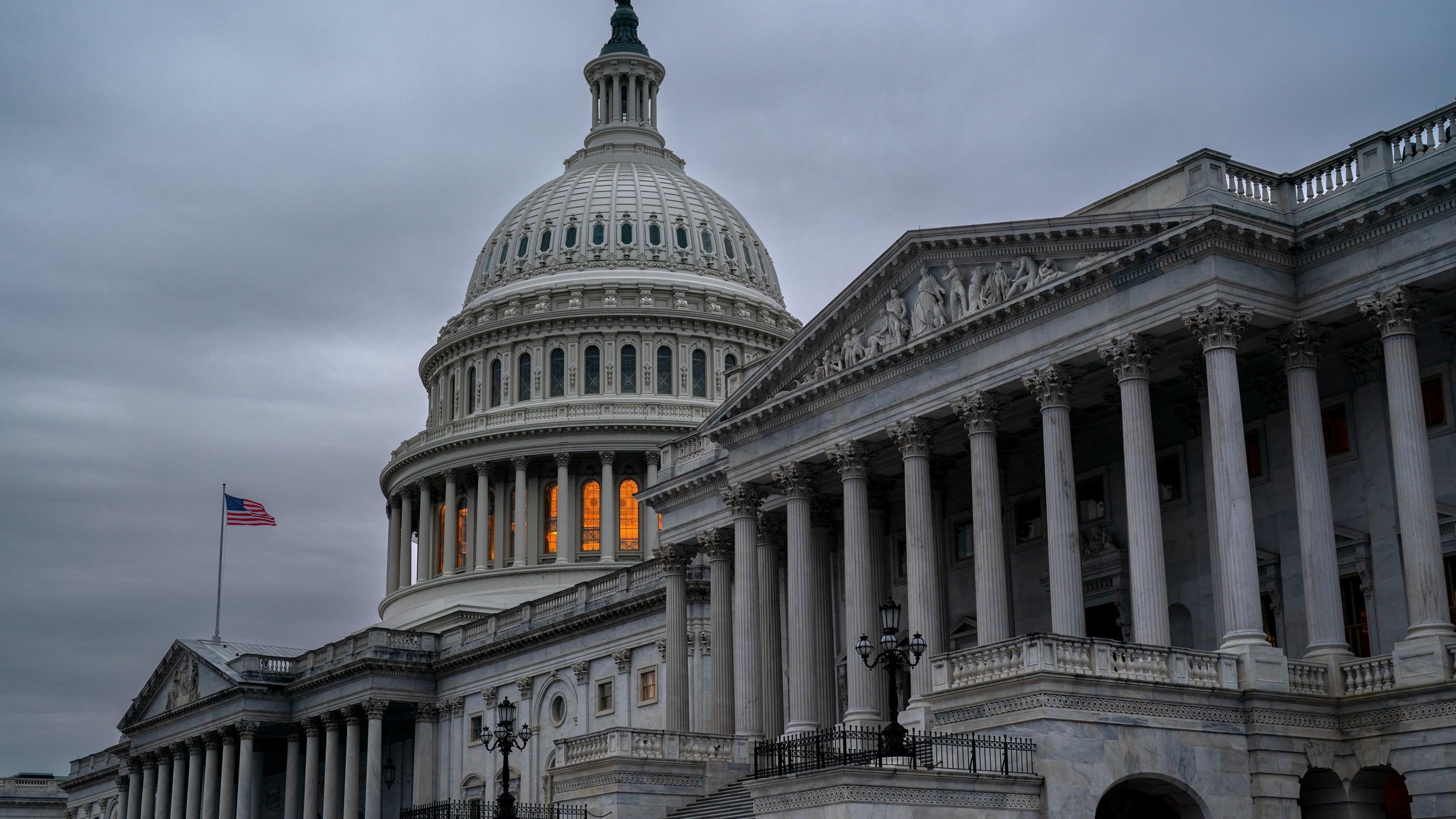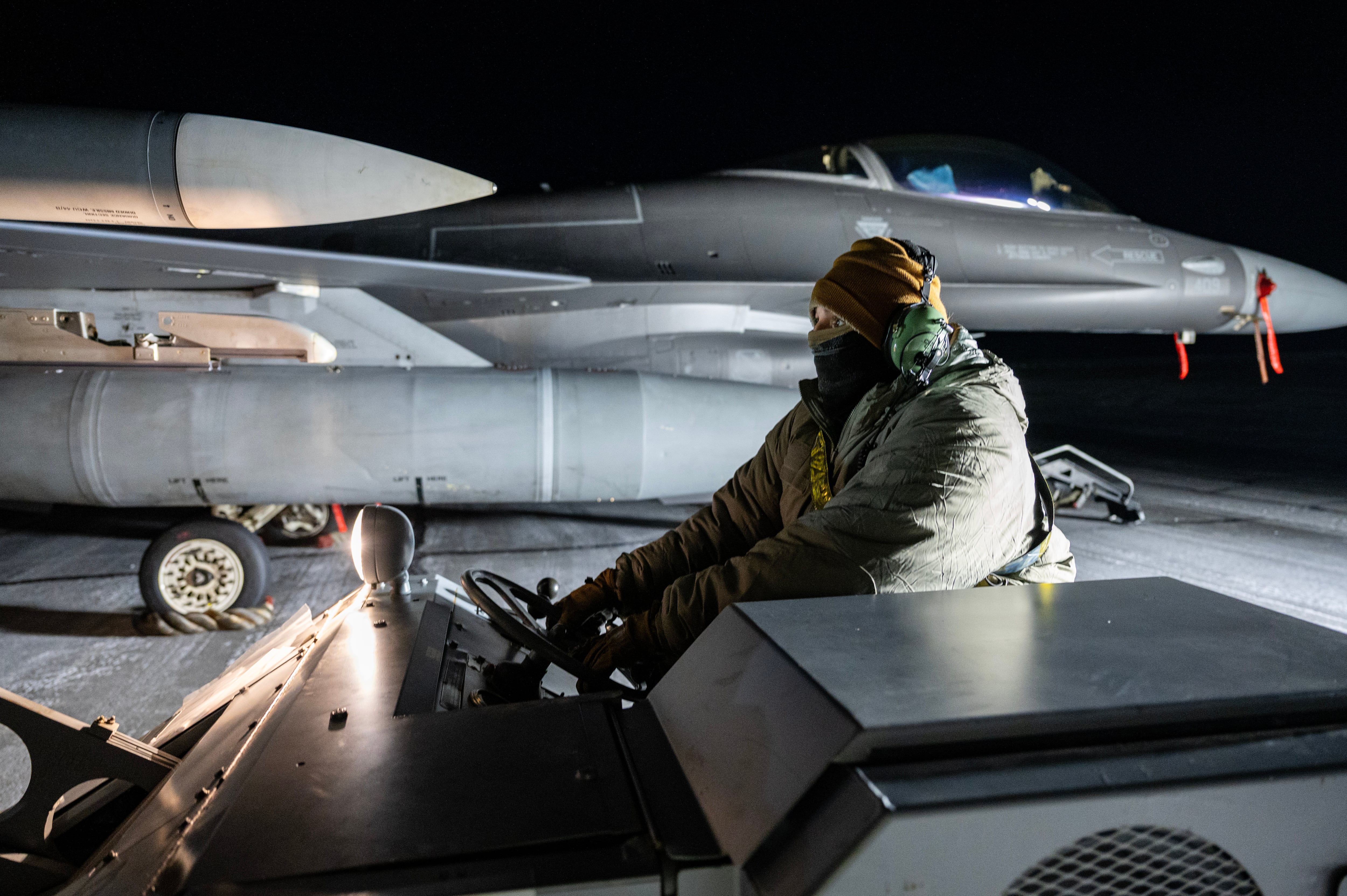SEOUL, South Korea — North Korean leader Kim Jong Un has vowed to shut down his country’s nuclear test site in May and disclose the process to experts and journalists from South Korea and the United States, Seoul’s presidential office said Sunday.
Kim also told South Korean President Moon Jae-in during their historic summit on Friday that the North would have no need to keep nuclear weapons if Washington commits to formally ending the 1950-53 Korean War and signs a non-aggression pact with Pyongyang, the presidential Blue House said.
While there are lingering questions about whether North Korea will ever decide to fully relinquish its nukes as it heads into negotiations with the United States, Kim’s comments qualify as the North’s most specific acknowledgement yet that denuclearization would constitute surrendering its weapons.
Seoul, which shuttled between Pyongyang and Washington to broker talks between Kim and President Donald Trump that are expected in May or June, has said Kim has expressed genuine interest in dealing away his nuclear weapons. But there has been skepticism because North Korea for decades has been pushing a concept of “denuclearization” that bears no resemblance to the American definition, vowing to pursue nuclear development unless Washington removes its troops and the nuclear umbrella defending South Korea and Japan.
RELATED
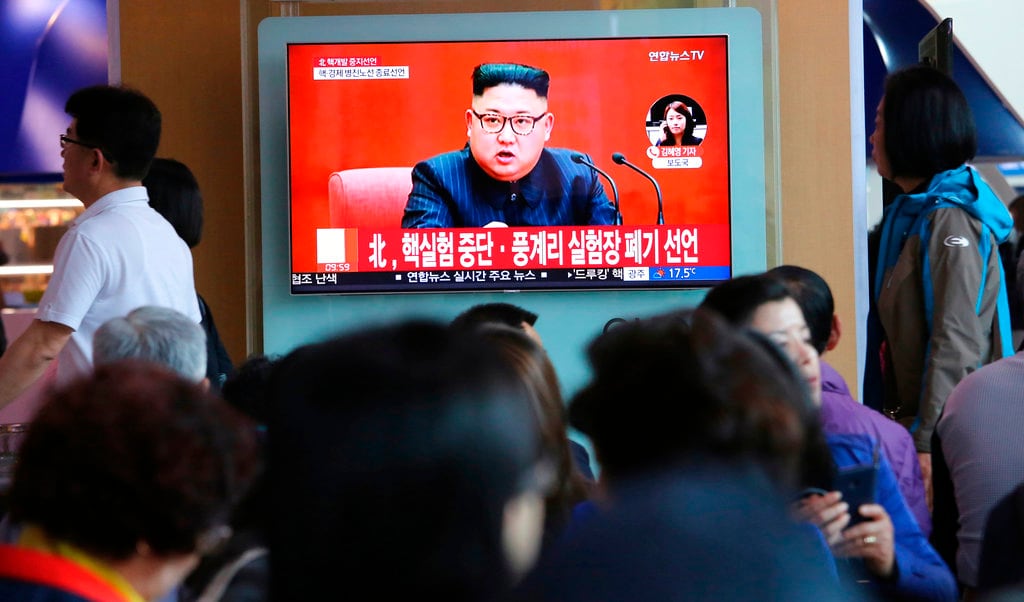
The closure of the nuclear test site would be a dramatic but likely symbolic event to set up Kim’s summit with Trump. North Korea already announced this month that it has suspended all tests of nuclear devices and intercontinental ballistic missiles and plans to close its nuclear testing ground.
During their summit at a border truce village, Moon and Kim promised to work toward the “complete denuclearization” of the Korean Peninsula, but made no references to verification or timetables.
Kim also expressed optimism about his meeting with Trump, saying the president will learn he’s not one to fire missiles toward the United States, Moon’s spokesman Yoon Young-chan said.
“Once we start talking, the United States will know that I am not a person to launch nuclear weapons at South Korea, the Pacific or the United States,” Kim said, according to Yoon.
“If we maintain frequent meetings and build trust with the United States and receive promises for an end to the war and a non-aggression treaty, then why would we need to live in difficulty by keeping our nuclear weapons?” Yoon quoted Kim as saying.
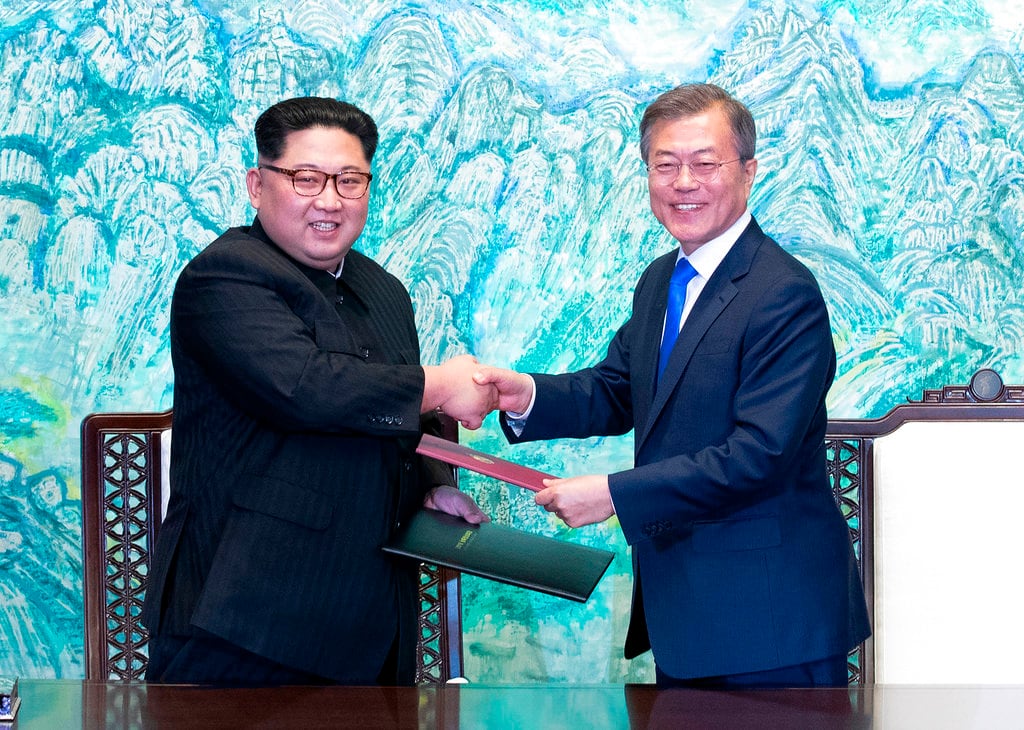
Adam Mount, a senior defense analyst at the Federation of American Scientists, said Kim’s comments were significant because they’re his most explicit acknowledgement yet that denuclearization means surrendering his nuclear weapons.
“Questions remain about whether Kim will agree to discuss other nuclear technology, fissile material and missiles. However, they imply a phased process with reciprocal concessions,” Mount said in an email. “It is not clear that the Trump administration will accept that kind of protracted program.”
Kim reacted to skepticism that the North would be closing down only the northernmost test tunnel at the site in Punggye-ri, which some analysts say became too unstable to conduct further underground detonations following the country’s sixth and most powerful nuclear test in September. In his conversation with Moon, Kim denied that he would be merely clearing out damaged goods, saying the site also has two new tunnels that are larger than previous testing facilities, Yoon said.
RELATED
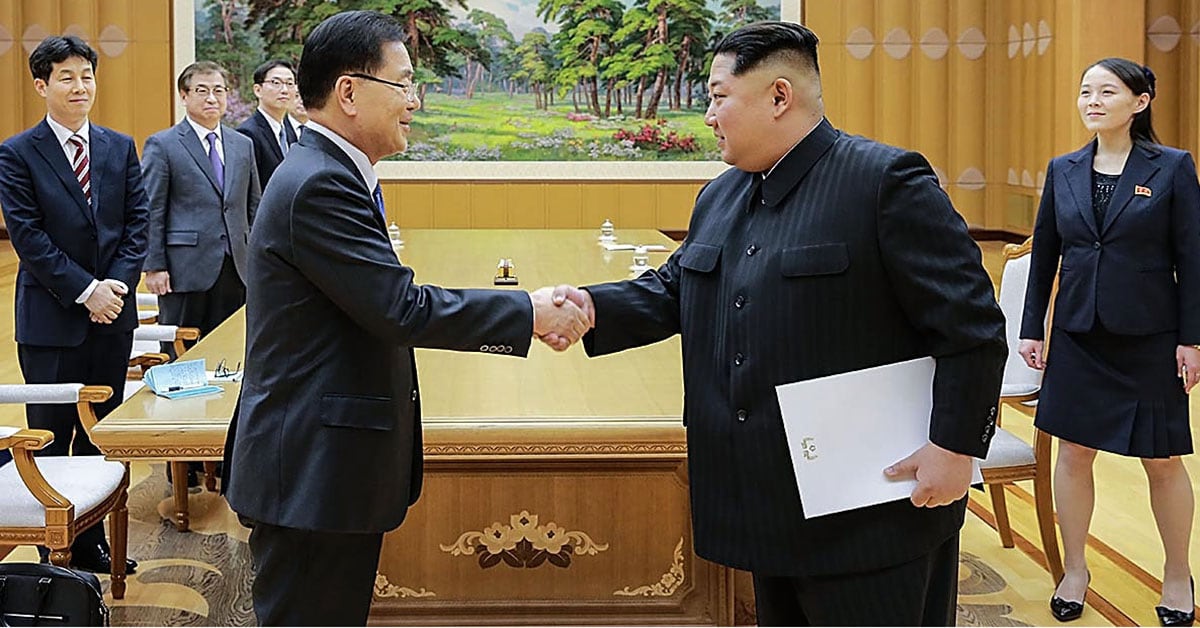
Some analysts see Moon’s agreement with Kim at the summit as a disappointment, citing the lack of references to verification and time frames and also the absence of a definition on what would constitute as a “complete” denuclearization of the peninsula.
But Patrick McEachern, a former State Department analyst currently with the Washington-based Wilson Center, said it was still meaningful that Moon extracted a commitment from Kim to complete denuclearization, which marked a significant change from Kim’s previous public demand to expand his nuclear arsenal quantitatively and qualitatively.
“The public conversation should now shift from speculation on whether North Korea would consider denuclearization to how South Korea and the United States can advance this denuclearization pledge in concrete steps in light of North Korea’s reciprocal demands for concrete steps toward an eventual peace agreement,” McEachern said in an email.
North Korea has invited the outside world to witness the dismantling of its nuclear facilities before. In June 2008, international broadcasters were allowed to air the demolishing of a cooling tower at the Nyongbyon reactor site, a year after the North reached an agreement with the U.S. and four other nations to disable its nuclear facilities in return for an aid package worth about $400 million.
But the deal eventually collapsed after North Korea refused to accept U.S.-proposed verification methods, and the country went on to conduct its second nuclear test detonation in May 2009.
Yoon said Kim also revealed plans to sync its time zone with South Korea’s. The Koreas had used the same time zone for decades before the North created its own “Pyongyang Time” in 2015 by setting the clock 30 minutes behind South Korea and Japan.
Yoon said the North’s decision to return to Seoul’s time zone was aimed at facilitating communication with South Korea and the United States.


